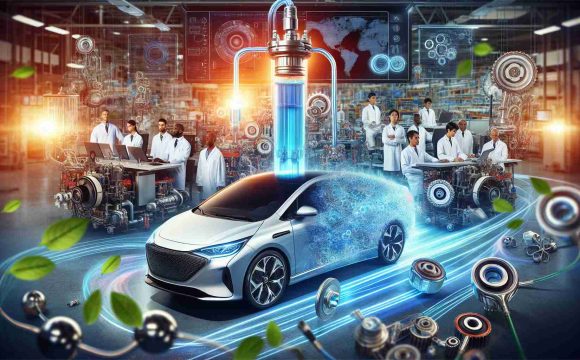As the push for cleaner energy sources gains momentum across the United States, it becomes increasingly clear that this shift is irreversible. Even amidst skepticism, the growth of renewable technologies continues to thrive, bringing widespread benefits to citizens from diverse political backgrounds.
In a recent address in Brazil, President Joe Biden highlighted the ongoing transition to clean energy, emphasizing that the momentum cannot be halted. Among the key initiatives supporting this movement is the Inflation Reduction Act, which allocates a significant $400 billion towards the advancement of solar energy, electric vehicles, and other sustainable technologies.
The overarching aim of this legislation is to drastically reduce carbon emissions, which are largely responsible for climate change and its accompanying environmental crises. By investing in renewable energy, the administration believes it can also drive economic growth and create new job opportunities while enhancing national energy security.
As public interest and adoption of clean energy solutions rise, it’s evident that many American citizens are reaping the rewards of this shift. The trend signifies a broader commitment toward a more sustainable future, highlighting the importance of greenhouse gas reduction as a national priority. The clean energy revolution, driven by both necessity and innovation, is shaping a new era for the country, making it clear that the transformation is underway and cannot be reversed.
The Future of Energy: Why the Shift to Clean Sources is Unstoppable
The transition to clean energy is not just a trend; it’s becoming a foundational aspect of the U.S. economy and society. As the nation pivots robustly toward renewable energy sources such as solar, wind, and electric vehicles, several factors highlight why this shift is not only necessary but also irreversible.
Innovations Driving Clean Energy
Innovations in renewable technologies continue to improve efficiency and decrease costs. Solar photovoltaic (PV) systems have seen a dramatic price drop of around 80% in the last decade due to advancements in manufacturing and materials. Likewise, wind energy is becoming more competitive, with onshore wind energy costs declining by nearly 50% since 2009. Hybrid technologies that combine solar and battery storage systems are also emerging, enhancing reliability and resilience in energy supply.
Benefits of the Transition
The benefits of transitioning to clean energy are manifold:
– Economic Growth: The renewable energy sector has already created millions of jobs in manufacturing, installation, and maintenance. According to the U.S. Bureau of Labor Statistics, jobs in solar and wind industries are among the fastest growing in the country.
– Energy Security: Reducing dependency on fossil fuels decreases vulnerability to fluctuating oil prices and strengthens national energy independence.
– Public Health: The decrease in air pollution associated with renewable energy sources can lead to significant public health benefits, reducing respiratory and cardiovascular issues among the population.
Challenges and Limitations
While the transition presents numerous advantages, there are challenges:
– Grid Infrastructure: The current electrical grid must be upgraded to accommodate the decentralized nature of renewable energy sources. This may require substantial investment and regulatory support.
– Intermittency of Supply: Solar and wind energy are not always available, presenting challenges for consistent energy supply. Battery storage technology and diversified energy portfolios are essential to mitigate these issues.
Pricing and Market Analysis
The Inflation Reduction Act represents a significant legislative commitment with the potential to influence energy prices favorably. By investing in infrastructure and technologies, it aims to reduce the costs of renewable energy further:
– Tax Credits: Homeowners and businesses will benefit from extended tax credits for solar installations, incentivizing more investments.
– Competitive Energy Market: As renewables become more entrenched and available, they are expected to push fossil fuel prices down due to increased competition.
Trends Toward Sustainability
Public opinion is shifting dramatically in favor of sustainable practices. Surveys indicate that a growing majority of Americans support aggressive action on climate change, with many prioritizing renewable energy sources in their personal and civic decisions. This trend is influencing business practices as well, with companies steadily adopting more sustainable operational strategies to meet consumer demand.
Conclusion
The transition to clean energy represents not only a response to immediate environmental challenges but also a long-term economic strategy for the U.S. With significant innovations, broad economic benefits, and increasing public support, the move toward renewables is not just a possibility—it is an impending reality set to shape the future of America’s energy landscape.
For more information on renewable energy initiatives in the U.S., visit energy.gov.







